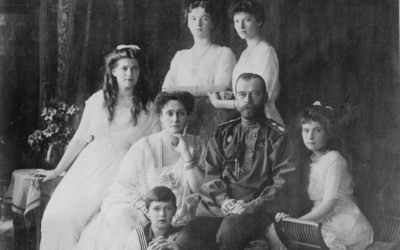Good summary of what we did and where it got us with Covid. From one of my favourite, trustworthy doctors, Malcolm Kendrick, a pragmatic Scot. A ream of discussion follows the article, which is also highly informative.
Excerpt:
If I were to recommend actions. I would recommend that we stop testing – unless someone is admitted to hospital and is seriously ill. Mass testing is simply causing mass panic and achieves absolutely nothing. At great cost. We should also just get on with our lives as before. We should just vaccinate those at greatest risk of dying, the elderly and vulnerable, and put this rather embarrassing episode of mad banner waving behind us. Hopefully, in time, we will learn something. Which is that we should not, ever, run about panicking, following the madly waved banners… ever again. However, I suspect that we will. This pandemic is going to be a model for all mass panicking stupidity in the future. Because to do otherwise, would be to admit that we made a pig’s ear of it this time. Far too many powerful reputations at stake to allow that.
| I have not written much about COVID19 recently. What can be said? In my opinion the world has simply gone bonkers. The best description can be found in Dante’s Inferno, written many hundreds of years ago. In it, Dante describes the outcasts, who took no side in the rebellion of angels. They live in the vestibule. Not in heaven, not in hell, forever unclassified. They reside on the shores of the Acheron. Naked and futile, they race around through a hellish mist in eternal pursuit of an elusive, wavering banner, symbolic of their pursuit of ever-shifting self-interest. I find this description of the desperate pursuit of an elusive wavering banner rings rather true. This, it seems, is pretty much the place we have arrived at. Which banner have you decided to follow? The ‘COVID19 s the most terrible infection ever, and we must do everything in our power to stop it, whatever the cost’ banner. Or the ‘What on earth are we doing? This is no worse than a bad flu, and we are destroying the world economy, stripping away basic human rights and killing more people than we are saving’ banner. There may be others. Between these two, main, completely incompatible positions, lies the truth. It is in pretty poor shape. It has been crushed, and bent out of shape, smashed, and left as a broken heap in the corner. I search where I can, to find the fragments, in an attempt to bring together a picture that makes some kind of sense. But what to believe? Who to believe? I feel somewhat like Rene Descartes. In order to find the ineluctable truth he scraped everything away until he was left with ‘Cogito, ergo sum’. ‘I think, therefore I am.’ I have stripped away at the accuracy of PCR COVID19 testing. I found myself left with nothing I could make any sense of. I hacked down to establish the way that COVID19 deaths are recorded. All I found were assumptions and difficulties. Did someone die with COVID19, of COVID19 – or did it have absolutely nothing whatsoever to do with COVID19? Who knows? I certainly don’t, and I wrote some of the death certificates myself. Have we overestimated deaths, or underestimated deaths? I do not know … and so it goes on. So, what do I know? I know that COVID19 exists – or I am as certain of this as I can be. Was it a natural mutation from a bat, or was it created in a laboratory? Well, I suppose it doesn’t really matter. It’s here, and there is no chance that any Government, anywhere, would ever admit responsibility for creating the damned thing. So, we will never know. If you asked me to bet, I would say it was created in a lab, then escaped by accident. Is it deadlier than influenza? Well, it is certainly deadlier than some strains of influenza. Indeed, most strains. However, Spanish flu was estimated to have killed fifty million, when the world’s population was about a fifth of what it is now. So, COVID19 is definitely less deadly than that one. About as deadly as the influenzas of 1957 and 1967. Probably. Will it mutate into something worse? Who knows. Will the current vaccines work on mutated strains? Who knows. Can it be transmitted by asymptomatic carriers? Who knows. How effective are the current vaccines going to be? Who knows. What are we left with? At the beginning, I kept relatively quiet on how deadly COVID19 would prove to be. Because I didn’t know. The figures raged up and down. The infection fatality rate become a battle scene, with warriors lined up on either side to defend their positions. I even got attacked by factcheckers, the self-appointed know-it-alls who are, it seems, capable of judging on all matters of scientific dispute. Truly, the Gods have descended to live amongst us. Those who can determine what is true, and what is not. No need for any further clinical trials, or any more scientific studies of any sort, ever. We just need to ask the Fact Checkers for the answer, to any given question. Anyway, it appeared that tens of thousands died in some countries, almost none in others. What I was waiting to see, was the impact on the one outcome that you cannot alter, or fudge. The outcome that is overall mortality i.e. the chances of dying, of anything. I did this because, when it comes to recording deaths from a specific illness, things can go in and out of fashion. A couple of years ago I looked at deaths from sepsis. At one time this was a condition of far lower priority. Doctors didn’t routinely search for it, or routinely record it, on death certificates. Sepsis is an infection that gets into the blood, toxins are released, and people die. Everyone knew it happened. Or at least I hope they did. Then, all of a sudden, there was a gigantic push to look for it more diligently, diagnose it more, treat it better. I think this was generally a good thing. Sepsis is eminently treatable, if you think to look for it, and lives can be saved. We now have initiatives like ‘Sepsis six’ and warnings that pop up on computers. ‘Have you considered sepsis,’ and suchlike. I love it … not. Because I do not love being told how to think, and do my job, by a computer algorithm programmed with ‘zero risk’ as their touchstone. But, hey ho. In 2013, in the UK, a report was published by the health ombudsman ‘Time to Act – severe sepsis, rapid diagnosis and treatment saves lives.’ As the report stated. ‘Sepsis is a more common reason for hospital admission than heart attack – and has a higher mortality.’ The UK Sepsis Trust 1 That last statement is somewhat disingenuous, as many people with sepsis are very elderly, often with multiple morbidities, and suchlike. They were probably going to die, shortly, from something else. Anyway. With all this activity, with all this increased sepsis recognition and treatment, you would expect the rate of deaths from sepsis to fall. It did not. The rate has gone up, by around 30% since 2013. Does this mean there is far more sepsis going about? Or, that it is just more often written on death certificates? I suggest the latter. I use this example, simply to make it clear that even the cause of death written on a death certificate is far from rock solid evidence. With COVID19, this is a massive problem. In the UK, and several other countries if you have had a COVID19 positive test (which may, or may not, be accurate) and you die within twenty-eight days of that positive test, you will be recorded as a COVID19 death. I do not know much for sure about COVID19, but I do know that is just complete nonsense. There are so many cases where – even if the COVID19 test was accurate – COVID19 would have had nothing whatsoever to do with the death. Another thing known, or at least we probably know, is that the vast majority of people who die had many other things wrong with them. In the US, the Centre of Disease Control (CDC) found that ninety-four per cent of people who died of COVID19 ‘related deaths’ had other significant diseases (co-morbidities) 2. This ninety-four per-cent figures would only be the co-morbidities that were known about – who knows what lurked beneath? Especially as people stopped doing post-mortems (i.e., autopsies in the US). So yes, they had COVID19 (or at least they had a positive test – which may not be the same thing), but they were often very old, and already severely ill. Using an extreme example, someone with terminal cancer who is a week from death, catches COVID19 in hospital, and dies. What killed them? The statistics say COVID19. I say, bollocks. When I started in medicine, ‘bronchopneumonia’ (a bad chest infection) used to be known as the ‘old man’s friend.’ For those who were very old, and frail, often demented, lying in care homes, often incontinent, a chest infection represented a reasonably painless way to die. Very often we would not actively treat it, instead we allowed for a peaceful death. Indeed, this still happens. Less so now, as someone, somewhere, often a relative from a country far, far, away – who has not visited for years – is far more likely to sue you. Did they really die of bronchopneumonia? You could argue yes, you could argue no. Yes, it was the thing that finally pushed them over the edge. No, they were already slowly dying as their body gave out. In the end, what does anyone actually die of? My Scottish grannie, who lived to one hundred and two, used to say ‘they die frae want of breath.’ Entirely accurate, but, alas, also completely useless. So, what you need to do, is look beyond what is written on death certificates. You need to look at what is happening to the overall mortality. Whilst you can argue endlessly, pointlessly, about specific causes of death. What you cannot argue about is whether or not someone is alive, or dead. Even I usually get this one right. No pulse, no breathing, no reaction of the pupils to light, no response to pain… and suchlike. Yup, dead. Now… what they die of? Um… let me think. Thus, I have tended to look to EuroMOMO. The European Mortality Monitoring project. As they say, of themselves: ‘The overall objective of the original European Mortality Monitoring Project was to design a routine public health mortality monitoring system aimed at detecting and measuring, on a real-time basis, excess number of deaths related to influenza and other possible public health threats across participating European Countries. Mortality is a basic indicator of health. Therefore, understanding its epidemiology is fundamental for effective public health planning and action. Mortality monitoring becomes pivotal during influenza or other pandemics for several reasons. In a severe pandemic, mortality monitoring can be a robust way to monitor the pandemics progression and its public health impact when other systems are failing, due to an overburdened health care sector. Decision makers will require data on the pandemics impact and on deaths by age and geographical area in various stages of the pandemic. Mortality monitoring can provide such estimates, which will be important to guide and prioritize health service response and decision-making, i.e. use of antivirals and vaccines.’ 3 Here are the data that you can therefore, pretty much, fully rely on. It is where I go to see what is really happening across Europe. Not all of Europe, as some countries do not participate. However, there are more than enough, to get a good picture. It encompasses key countries such as Spain, Italy, the UK (split into four separate countries), Sweden and suchlike. Here is the graph of overall mortality for all ages, in all countries. The graph starts at the beginning of 2017 and carries on to almost the end of 2020.  As you can see, in each winter there is an increase in deaths. In 2020, nothing much happened at the start of the year, then we had – what must have been – the COVID19 spike. The tall pointy bit around week 15. It started in late March and was pretty much finished by mid-May. Now, we are in winter, and the usual winter spike appears. It seems to be around the same size as winter 2017/18. It also seems to have passed the peak and is now falling. But it could jump up again. [The figures in the most recent weeks can always be a bit inaccurate, as it can take some time for all the data to arrive] Two things stand out. First, there was an obvious ‘COVID19 spike’. Second, what we are seeing at present does not differ greatly from previous years. The normal winter spike in deaths. If we split this down into individual countries, this reasonably clear pattern falls apart. Here are the figures from England As you can see, in each winter there is an increase in deaths. In 2020, nothing much happened at the start of the year, then we had – what must have been – the COVID19 spike. The tall pointy bit around week 15. It started in late March and was pretty much finished by mid-May. Now, we are in winter, and the usual winter spike appears. It seems to be around the same size as winter 2017/18. It also seems to have passed the peak and is now falling. But it could jump up again. [The figures in the most recent weeks can always be a bit inaccurate, as it can take some time for all the data to arrive] Two things stand out. First, there was an obvious ‘COVID19 spike’. Second, what we are seeing at present does not differ greatly from previous years. The normal winter spike in deaths. If we split this down into individual countries, this reasonably clear pattern falls apart. Here are the figures from England  Unlike the first graph, the scale on the left is not absolute numbers. It is a thing called the Z-score. Which means standard deviation from the mean. Sorry, maths. If the Z-score goes above five, this means something significant is happening. The red, upper, dotted line is Z > 5. As you can see, despite the howls of anguish from England about COVID19 overwhelming the country, we are really not seeing much at all. What of Sweden, that pariah country? They did not fully lock-down, the irresponsible fools (all they did was follow WHO guidance – by the way), and we are now told they are suffering terribly, they should have enforced far more rigid lockdown, their ‘experiment’ failed etc. etc. COVID19 shall have its vengeance. Or to quote Arnie – I’ll be back. Unlike the first graph, the scale on the left is not absolute numbers. It is a thing called the Z-score. Which means standard deviation from the mean. Sorry, maths. If the Z-score goes above five, this means something significant is happening. The red, upper, dotted line is Z > 5. As you can see, despite the howls of anguish from England about COVID19 overwhelming the country, we are really not seeing much at all. What of Sweden, that pariah country? They did not fully lock-down, the irresponsible fools (all they did was follow WHO guidance – by the way), and we are now told they are suffering terribly, they should have enforced far more rigid lockdown, their ‘experiment’ failed etc. etc. COVID19 shall have its vengeance. Or to quote Arnie – I’ll be back.  As you can see, nothing much happening in Sweden either. Then, if you look further, there are anomalies all over the place. Northern Ireland, which is part of the UK, and did exactly the same things as the rest of the UK with regard to lockdown, masks etc. At least it did in the earlier part of the year. However, it shows a completely different pattern to England. Or, to be fully accurate, it shows no pattern at all. No waves, and nobody drowning. As you can see, nothing much happening in Sweden either. Then, if you look further, there are anomalies all over the place. Northern Ireland, which is part of the UK, and did exactly the same things as the rest of the UK with regard to lockdown, masks etc. At least it did in the earlier part of the year. However, it shows a completely different pattern to England. Or, to be fully accurate, it shows no pattern at all. No waves, and nobody drowning.  What of Slovenia? What of Slovenia?  As you can see absolutely nothing happened earlier in the year in Slovenia. Now, it has the biggest spike of all – apart from, maybe, Switzerland. Earlier in the year it was held up as a great example of how brilliantly effective masks were. Now… you don’t hear so much about masks. Maybe masks only work in months beginning with M. [Maybe, whisper it, they don’t work at all]. So, what have I learned from euroMOMO? First that it appears to have made absolutely no difference if a country locked down hard, and early, or did not. Everyone points at Norway and Finland as examples of great and early government action, and how wonderful everything would have been if we had done the same. Well, look up at Northern Ireland. Then look at Finland As you can see absolutely nothing happened earlier in the year in Slovenia. Now, it has the biggest spike of all – apart from, maybe, Switzerland. Earlier in the year it was held up as a great example of how brilliantly effective masks were. Now… you don’t hear so much about masks. Maybe masks only work in months beginning with M. [Maybe, whisper it, they don’t work at all]. So, what have I learned from euroMOMO? First that it appears to have made absolutely no difference if a country locked down hard, and early, or did not. Everyone points at Norway and Finland as examples of great and early government action, and how wonderful everything would have been if we had done the same. Well, look up at Northern Ireland. Then look at Finland  Spot the difference. There is none. Of course, much of the most heated debate surrounded what happened during the so-called first wave. Who dealt with it well, or badly. Now, everyone in Europe is doing much the same things. Lockdown, restrictions on travel, restrictions on meeting other people, everyone wearing masks, etc. etc. Yet some countries are having a new wave, and others are not. There is a special prize for anyone who can match up the severity of restrictions in various countries, to the Z-score. I say this, because no correlation exists. So, again, what have I learned about COVID19? I learned that all Governments are floundering about, all claiming to have exerted some sort of control over this disease and ignoring all evidence to the contrary. In truth, they have achieved nothing. As restrictions and lockdowns have become more severe, in many cases the number of infections has simply risen and risen, completely unaffected by anything that has been done. The official solution is, of course, more restrictions. ‘We just haven’t restricted people enough!’ Sigh. When something doesn’t work, the answer is not to keep doing it with even greater fervour. The real answer is to stop doing it and try something else instead. I have also learned that, in most countries, COVID19 appears to be seasonal. It went away – everywhere – in the summer. It came back in the autumn/winter, as various viruses do. On its return is has been, generally, far less deadly. Much you would expect. The most vulnerable died on first exposure, and far fewer people had any resistance to it, at all. Now, a number of people do have some immunity, and may of the vulnerable are already dead. Which means that, in this so-called second wave COVID19 is of no greater an issue than a moderately bad flu season. If I were to recommend actions. I would recommend that we stop testing – unless someone is admitted to hospital and is seriously ill. Mass testing is simply causing mass panic and achieves absolutely nothing. At great cost. We should also just get on with our lives as before. We should just vaccinate those at greatest risk of dying, the elderly and vulnerable, and put this rather embarrassing episode of mad banner waving behind us. Hopefully, in time, we will learn something. Which is that we should not, ever, run about panicking, following the madly waved banners… ever again. However, I suspect that we will. This pandemic is going to be a model for all mass panicking stupidity in the future. Because to do otherwise, would be to admit that we made a pig’s ear of it this time. Far too many powerful reputations at stake to allow that. 1: https://www.ombudsman.org.uk/sites/default/files/Time_to_act_report.pdf 2: https://www.cdc.gov/nchs/nvss/vsrr/covid_weekly/index.htm?fbclid=IwAR3-wrg3tTKK5-9tOHPGAHWFVO3DfslkJ0KsDEPQpWmPbKtp6EsoVV2Qs1Q&_ga=2.83596054.1497558416.1598967201-386365132.1598967194#Comorbidities 3: https://www.euromomo.eu/about-us/history/ Dr. Malcolm Kendrick | December 30, 2020 at 3:32 pm | Categories: COVID-19 | URL: https://wp.me/p2i0Uz-2sB Comment See all comments Like Unsubscribe to no longer receive posts from Dr. Malcolm Kendrick. Spot the difference. There is none. Of course, much of the most heated debate surrounded what happened during the so-called first wave. Who dealt with it well, or badly. Now, everyone in Europe is doing much the same things. Lockdown, restrictions on travel, restrictions on meeting other people, everyone wearing masks, etc. etc. Yet some countries are having a new wave, and others are not. There is a special prize for anyone who can match up the severity of restrictions in various countries, to the Z-score. I say this, because no correlation exists. So, again, what have I learned about COVID19? I learned that all Governments are floundering about, all claiming to have exerted some sort of control over this disease and ignoring all evidence to the contrary. In truth, they have achieved nothing. As restrictions and lockdowns have become more severe, in many cases the number of infections has simply risen and risen, completely unaffected by anything that has been done. The official solution is, of course, more restrictions. ‘We just haven’t restricted people enough!’ Sigh. When something doesn’t work, the answer is not to keep doing it with even greater fervour. The real answer is to stop doing it and try something else instead. I have also learned that, in most countries, COVID19 appears to be seasonal. It went away – everywhere – in the summer. It came back in the autumn/winter, as various viruses do. On its return is has been, generally, far less deadly. Much you would expect. The most vulnerable died on first exposure, and far fewer people had any resistance to it, at all. Now, a number of people do have some immunity, and may of the vulnerable are already dead. Which means that, in this so-called second wave COVID19 is of no greater an issue than a moderately bad flu season. If I were to recommend actions. I would recommend that we stop testing – unless someone is admitted to hospital and is seriously ill. Mass testing is simply causing mass panic and achieves absolutely nothing. At great cost. We should also just get on with our lives as before. We should just vaccinate those at greatest risk of dying, the elderly and vulnerable, and put this rather embarrassing episode of mad banner waving behind us. Hopefully, in time, we will learn something. Which is that we should not, ever, run about panicking, following the madly waved banners… ever again. However, I suspect that we will. This pandemic is going to be a model for all mass panicking stupidity in the future. Because to do otherwise, would be to admit that we made a pig’s ear of it this time. Far too many powerful reputations at stake to allow that. 1: https://www.ombudsman.org.uk/sites/default/files/Time_to_act_report.pdf 2: https://www.cdc.gov/nchs/nvss/vsrr/covid_weekly/index.htm?fbclid=IwAR3-wrg3tTKK5-9tOHPGAHWFVO3DfslkJ0KsDEPQpWmPbKtp6EsoVV2Qs1Q&_ga=2.83596054.1497558416.1598967201-386365132.1598967194#Comorbidities 3: https://www.euromomo.eu/about-us/history/ Dr. Malcolm Kendrick | December 30, 2020 at 3:32 pm | Categories: COVID-19 | URL: https://wp.me/p2i0Uz-2sB Comment See all comments Like Unsubscribe to no longer receive posts from Dr. Malcolm Kendrick.Change your email settings at Manage Subscriptions. Trouble clicking? Copy and paste this URL into your browser: http://drmalcolmkendrick.org/2020/12/30/what-is-left-to-say/ Thanks for flying with WordPress.com |










0 Comments